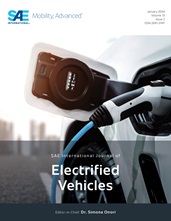The transport sector is one of the major parties responsible for carbon dioxide
(CO2) and pollutants emissions in Europe. For this reason, one of
the main commitments of the European Commission is its decarbonization by
2035/2040. To achieve this target, during the last decades, different propulsion
technologies were developed such as hybrid electric vehicles (HEVs), plug-in
electric vehicles (PHEVs), and battery electric vehicles (BEV). The first two
proposals can be considered as bridging technology between the internal
combustion engine (ICE) and the BEV because they offer at the same time
comparable performance as conventional powertrains and improved efficiency.
However, both technologies are struggling with the tightening of pollutants and
CO2 limits. On the other hand, the BEV can offer zero emissions
at the tailpipe, but it suffers from limited range capabilities and the lack of
fast-charging infrastructures. Within this context, the fuel cell vehicle (FCV)
appears as an interesting opportunity because it offers zero tailpipe emissions
and equivalent refuelling time of the ICE. This article evaluates through
mathematical simulations the performance of two fuel cell electric buses
(FCEBs), which are supposed to work respectively in urban and highway driving
conditions. The urban bus is equipped with a single fuel cell (FC) module of 85
kW-Net and an electric motor (EM) of 225 kW. The intercity bus is equipped with
two FC modules with a total power of 170 kW-Net and two EMs of 225 kW each. A
sensitivity to the battery capacity from 20 kWh to 40 kWh was performed for both
FECBs. The power split between the FC module and the high-voltage battery was
optimized with the Equivalent Consumption Minimization Strategy (ECMS). The two
FCEBs were tested considering different portfolios of cycles: in the case of the
urban bus in Braunschweig and the Standardized On-Road Test Cycles SORT1 and
SORT2 were assumed as a reference, while cycles like the Highway Fuel Economy
Test (HWFET), European Transient Cycle (ETC), and cruising at 100 km/h were
assumed as reference for the intercity. Simulation results highlighted that the
increase of battery capacity in the case of the urban bus from 20 kWh to 30 kWh
reduces hydrogen (H2) consumption by 11% along the Braunschweig
cycle. On the other hand, in the case of the intercity bus, the fuel consumption
is less affected by the increase of capacity in the same range. In this case a
reduction of 4.7% is estimated for the HWFET cycle, and it is less than 1% in
the case of cruising conditions.
